Japanese festivals intro
Japanese festivals are unlike anything you’ve ever seen! Picture this: ancient traditions mixing with modern marvels, creating spectacles that will leave you speechless. From breathtaking fireworks lighting up the night sky to enormous floats parading through the streets, every festival is a journey into another world. Get ready to experience the magic of Japan’s top 8 can’t-miss festivals! You won’t believe your eyes.
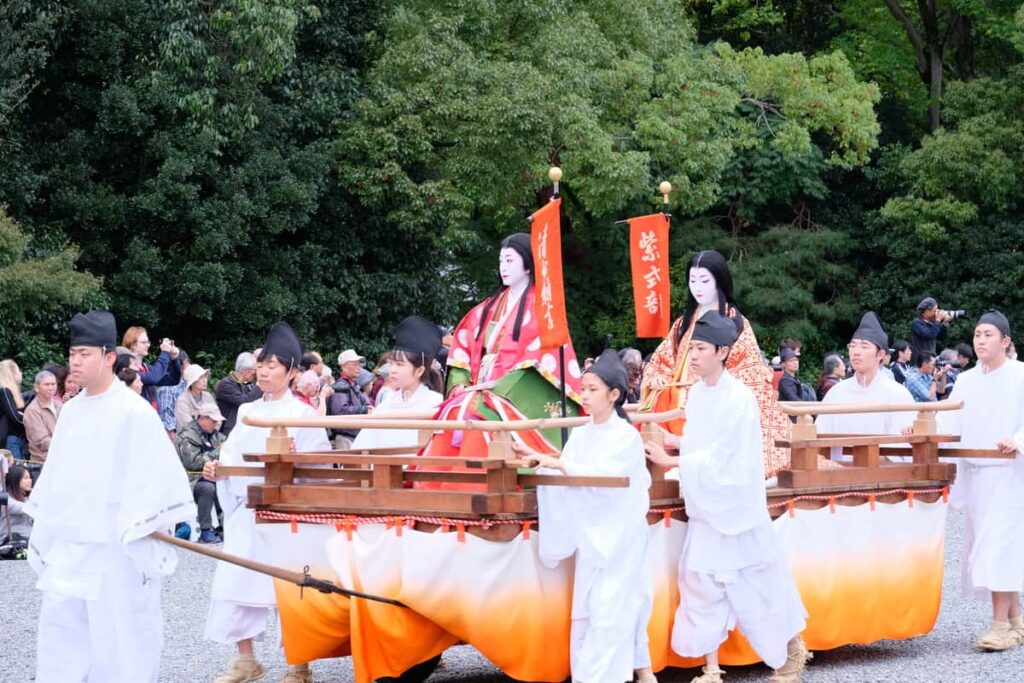
Gion Matsuri
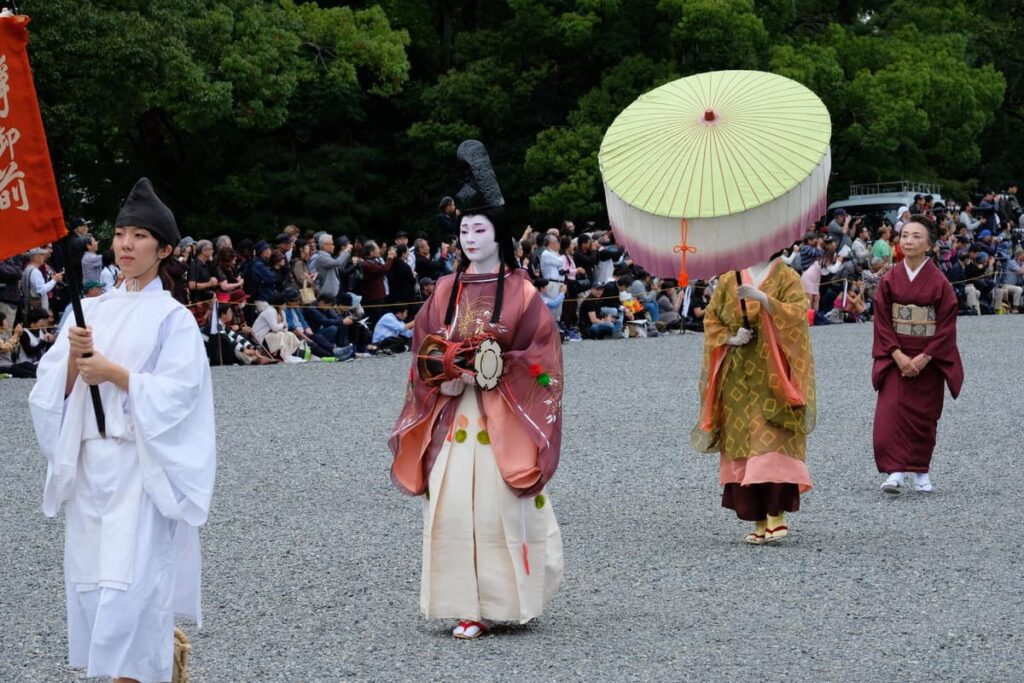
The Gion Matsuri in Kyoto is one of the most famous festivals in Japan. This traditional Japanese festival has been a significant part of Japan’s cultural heritage since the 9th century. It’s a month-long extravaganza, culminating in a grand finale on July 17th, making it a highlight of the Japanese festivals calendar.
Here are some key features of this Japan festival:
- Origin: Since the 9th century
- Duration: Month-long, grand finale on July 17th
- Highlight: Parade of “yamahoko” floats
- Unique Feature: Floats are like moving art galleries, showcasing scenes from old Japanese stories
- Craftsmanship: Centuries-old skills poured into creating ornate woodcarvings and luxurious fabrics
- Address: Maruyamacho, Higashiyama Ward, Kyoto, Kyoto Prefecture 605-0071.
- Access: From Kyoto Station, take Bus no. 100 or 206 and alight at the Gion bus stop. Walk past Yasaka Shrine, and you should be at the entrance of the park
Need a hotel near Kyoto? check below the availability.
Aomori Nebuta Festival
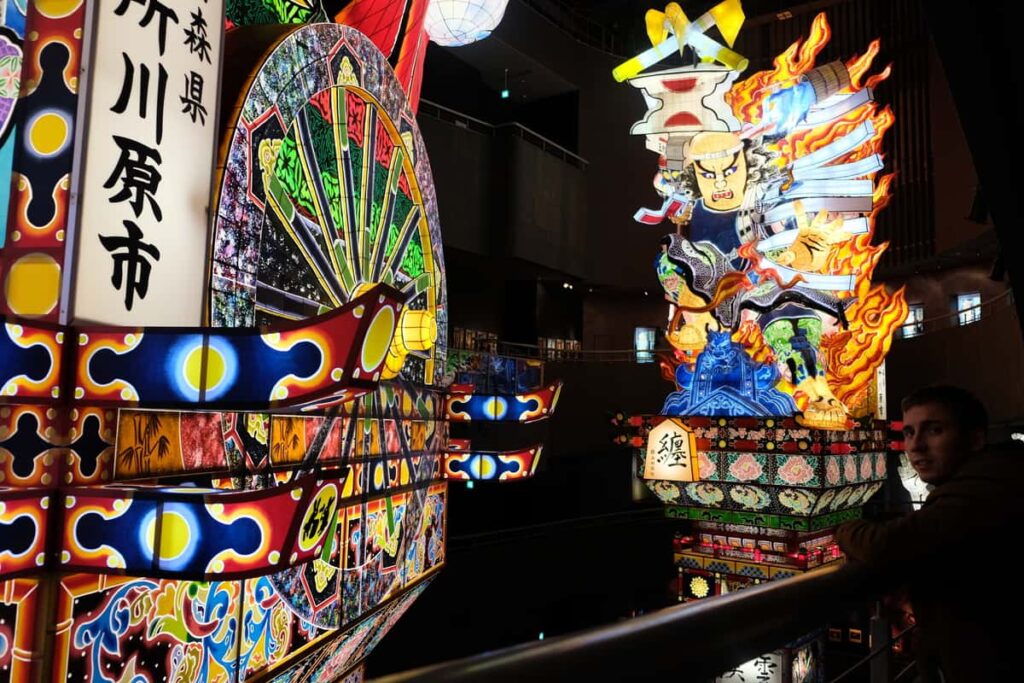
Remember early August for Aomori’s Nebuta Matsuri, This Japan festival transforms the city streets with giant lantern floats depicting tales from Japanese legends. As part of the traditional Japanese festivals, you’ll witness towering samurai and majestic serpents, all shining in bright colors. It’s like stepping into a dream! This is a highlight among Japanese festivals that you shouldn’t miss.
Here are some key features of this festival:
- Time: Early August
- Location: Aomori
- Festival: Nebuta Matsuri
- Unique Feature: City streets are transformed with giant lantern floats
- Depictions: Tales from Japanese legends, towering samurai, and majestic serpents
- Visual Appeal: Bright colors
- Experience: Like stepping into a dream
- Highlight: Among traditional Japanese festivals
Main Venue: Minato Park, Aomori City.
Address: 1-4 Minamiuchi-machi, Aomori-shi, Aomori-ken.
Festival Dates: Annually from August 2 to 7
Need a hotel near Aomori? check below the availability.
Takayama Matsuri
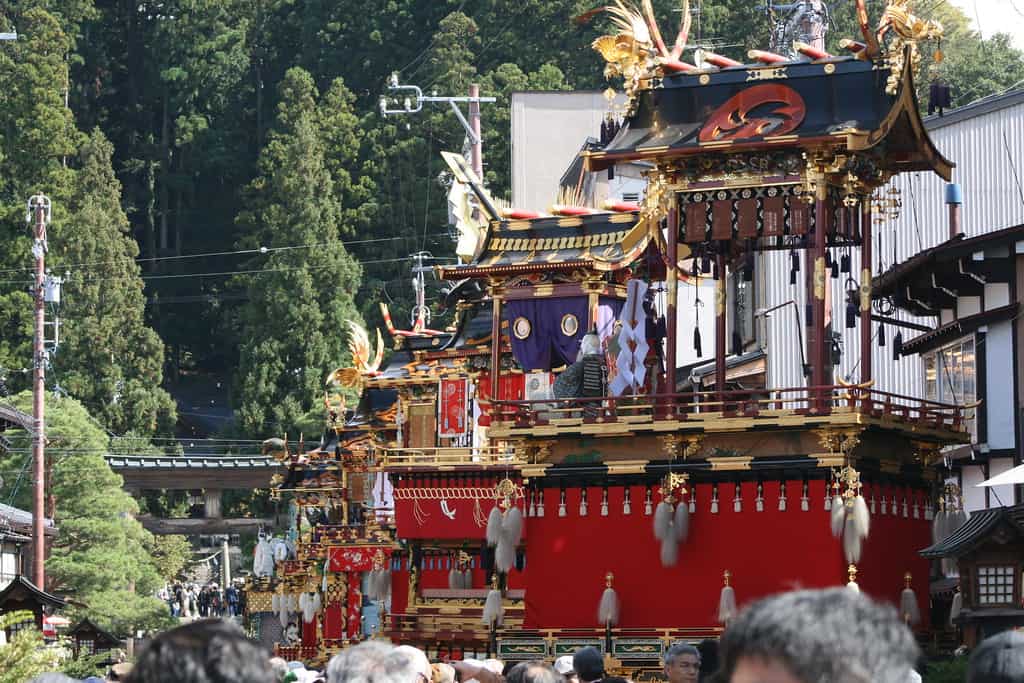
During spring and fall, Takayama hosts a remarkable event, honoring its skilled craftsmen. Twice a year, in April and October, this charming town in the Japan Alps celebrates its legendary carpenters and artists with elaborate floats as part of the traditional Japanese festivals. These floats, called yatai, resemble medieval buildings and parade through Takayama’s historic streets. Covered in gold, intricate carvings, and traditional rooflines, they evoke the grandeur of ancient Japan. Each float is a masterpiece passed down through generations. Watching them, pulled by sacred cows and accompanied by costumed attendants, feels like stepping back in time to the Edo era. It’s a beautiful tribute to Japan’s rich artistic heritage and a highlight among festivals in Japan.
Here are some key features of this Japan festival:
- Time: Spring and Fall
- Location: Takayama, Japan Alps
- Unique Feature: Elaborate floats, called yatai, resembling medieval buildings.
- Parade: Through Takayama’s historic streets
- Floats: Covered in gold, intricate carvings, and traditional rooflines
- Experience: Feels like stepping back in time to the Edo era
- Tribute: To Japan’s rich artistic heritage
- Highlight: Among traditional Japanese festivals
Spring Festival:
- Venue: Southern half of Takayama’s old town, centered around Hie Shrine (also known as Sanno-sama).
- Address: 1-4 Minamiuchi-machi, Takayama-shi, Gifu-ken, Japan.
Autumn Festival:
- Venue: Northern half of Takayama’s old town, centered around Hachiman Shrine (also known as Hachiman Festival).
Need a hotel near Takayama? check below the availability.
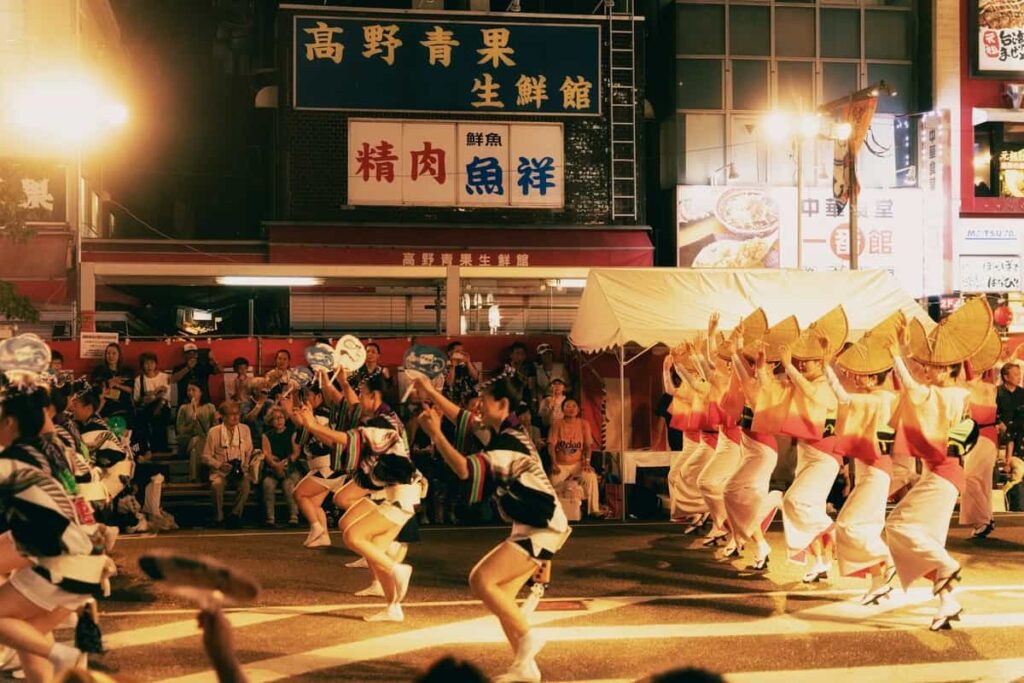
Every August, the sleepy streets of Tokushima burst into a marathon four-night frenzy of rhythmic jubilation as part of the Awa Odori festival, one of the famous Japanese festivals. This traditional Japanese festival is when locals and visitors alike deliriously consume each other in orgiastic festival energy, making it a highlight among festivals in Japan.
Here are some key features of this Japan festival:
- Time: Mid-August
- Location: Tokushima
- Festival: Awa Odori
- Unique Feature: Rambunctious street dances and 400-year-old choreography passed down like martial arts katas
- Experience: Groups of costumed dancers take to the streets in a looping choreographed revelry, twisting and chanting to the clattering taiko drums and sublime melodies of shamisen lutes and bamboo flutes
- Participation: Everyone gets swept up in the infectious groove, whether they’re dancing the classical ren moves passed down from the 1600s or drunk freestyling into sheer ecstasy
- Highlight: Among traditional Japanese festivals
Main Venue:
- Location: Minato Park, Tokushima City, Tokushima Prefecture.
- Address: 1-4 Minamiuchi-machi, Tokushima-shi, Tokushima-ken.
- Access: If you’re traveling by airplane, you can fly from Tokyo’s Haneda Airport to Tokushima. By rail, take the Tokaido-Sanyo Shinkansen to Okayama Station, then continue to Tokushima Station via the JR Seto-Ohashi Kotoku Line. Expressway bus services from Osaka Station to Tokushima Station are also available.
- Festival Dates: Annually from August 12 to 15.
Additional Venue:
- Location: Awa Odori Kaikan (Meeting Hall), Tokushima City.
- Address: 2-20 Shinmachibashi, Tokushima-shi, Tokushima 770-0904.
- Opening Hours: 9 am–9 pm (Monday–Sunday).
Need a hotel near Tokushima City? check below the availability.
Sendai Tanabata Matsuri
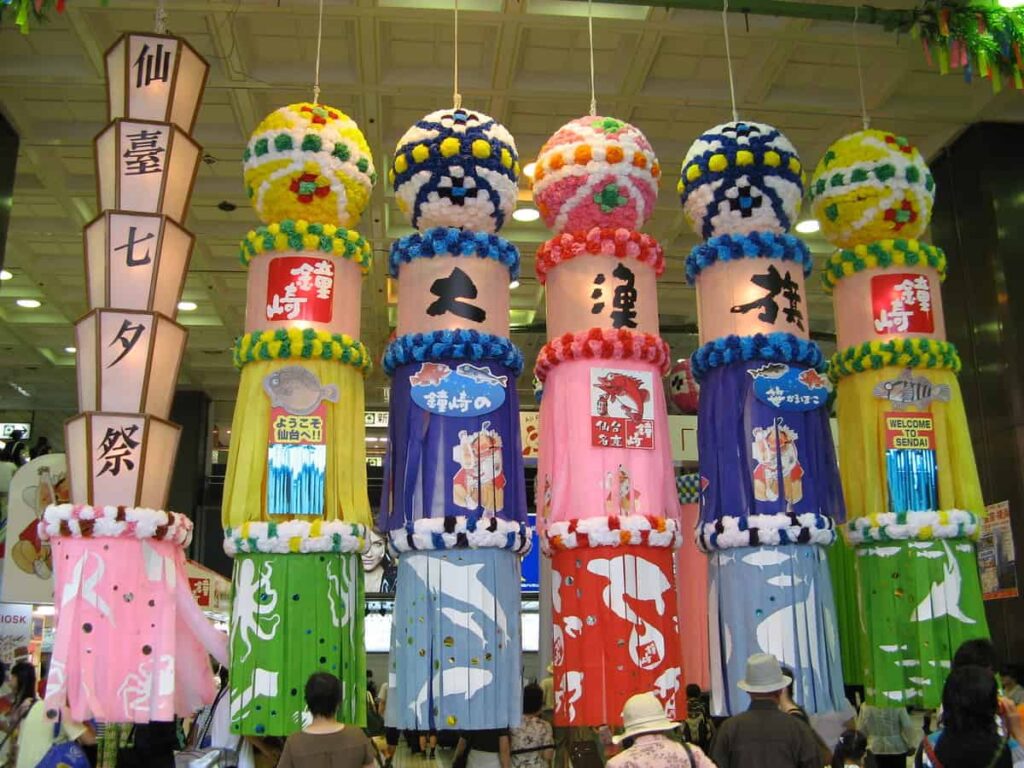
Every year from August 6th through the 8th, downtown Sendai hosts the Tanabata Festival. This festival in Japan transforms city streets into celestial dreamscapes with an explosion of vibrant color. Over 3 million origami decorations and streamers create a kaleidoscopic celebration, fulfilling your childhood wish to gather enough breadcrumbs to lead UFOs straight to your backyard.
Massive bamboo trees are uprooted and erected near shrines to serve as anchors for hanging ornaments, turning each cross street into an ethereal passageway of dancing paper. More than a mere visual spectacle, Tanabata is a traditional Japanese festival celebrating the annual reunion of the deities Orihime and Hikoboshi. The custom calls for adorning bamboo branches with elaborate origami shapes and written wishes, many with heartfelt prayers for growth, healing, or affection.
Here are some key features of this Japan festival:
- Time: Early August
- Location: Downtown Sendai
- Unique Feature: Transformation of city streets into celestial dreamscapes with over 3 million origami decorations and streamers
- Decorations: Massive bamboo trees serve as anchors for hanging ornaments
- Custom: Celebrating the annual reunion of the deities Orihime and Hikoboshi
- Tradition: Adorning bamboo branches with elaborate origami shapes and written wishes
- Prayers: Many wishes include heartfelt prayers for growth, healing, or affection
- Highlight: Among traditional Japanese festivals
The exact address for one of the events, the Sendai Tanabata Fireworks, is inside Tohoku University Centennial Hall, Aoba-Ku, Sendai. The fireworks display is held on the night before the festival (August 5th) around Nishi Park
Need a hotel near Sendai City? check below the availability.
Nagasaki Lantern Festival
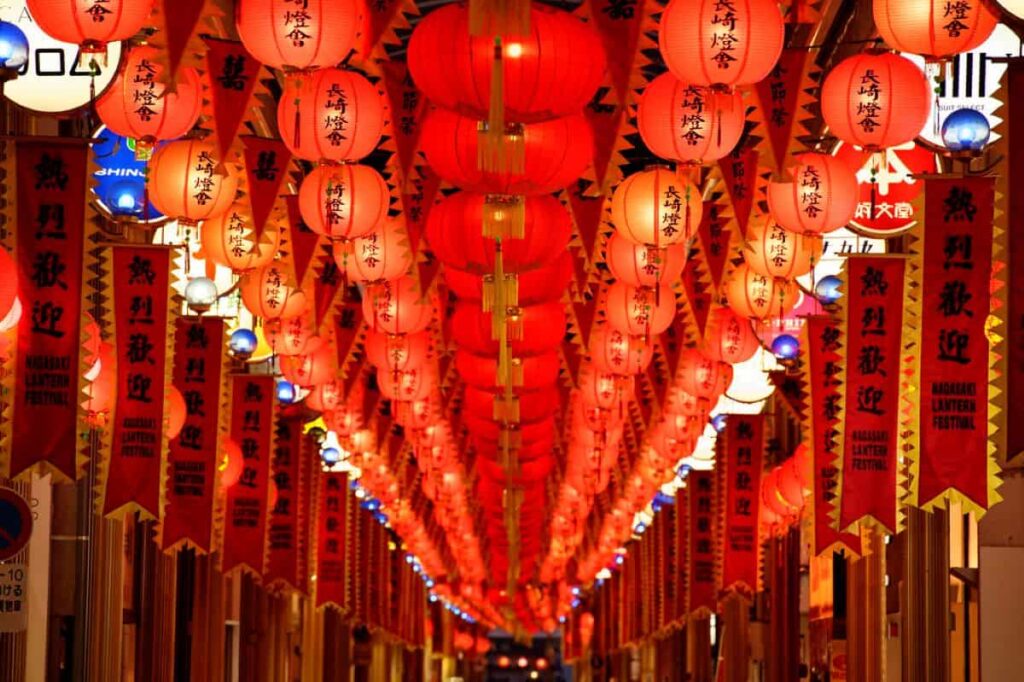
During the Chinese New Year, which falls in January or February, Nagasaki hosts the illustrious Lantern Festival. Despite its name, this festival in Japan has no affiliation with paper bag “janterns”. Instead, it is a breathtaking exhibition of Chinese cultural heritage and customs in one of Japan’s most quintessentially Chinese communities.
This traditional Japanese festival is a polychromatic spectacle of hanging paper lanterns and sparkling fairy lights illuminating proud displays of Chinese artistry and craftsmanship. During the Shingoren festival season, the historic Chinatown area erupts in a dazzling exhibition of larger-than-life lantern installations and choreographed dragon dances.
Here are some key features of this Japan festival:
- Time: Chinese New Year (Jan/Feb).
- Location: Nagasaki.
- Unique Feature: Polychromatic spectacle of hanging paper lanterns and sparkling fairy lights.
- Experience: Breathtaking exhibition of Chinese cultural heritage and customs.
- Festival Season: Shingoren.
- Decorations: Larger-than-life lantern installations and choreographed dragon dances.
- Centerpiece: The immense 15-meter Chinese Gwon sculpture of snakes and dragons that towers majestically over the Tsuruhashi bridge.
- Highlight: Among traditional Japanese festivals.
Main Venue: Minato Park, Nagasaki Chinatown
- Address: 1500-1 Shinchimachi, Nagasaki City
- Access: From Nagasaki Station, take the trolley headed for Shougakuji Shita Station and get off at Tsukimachi Station. It’s just a 3-minute walk from there.
Additional Venue: Central Park
- Address: 4-32 Teramachi, Nagasaki City, Nagasaki Prefecture
Need a hotel near Nagasaki City? check below the availability.
Kishiwada Danjiri Matsuri
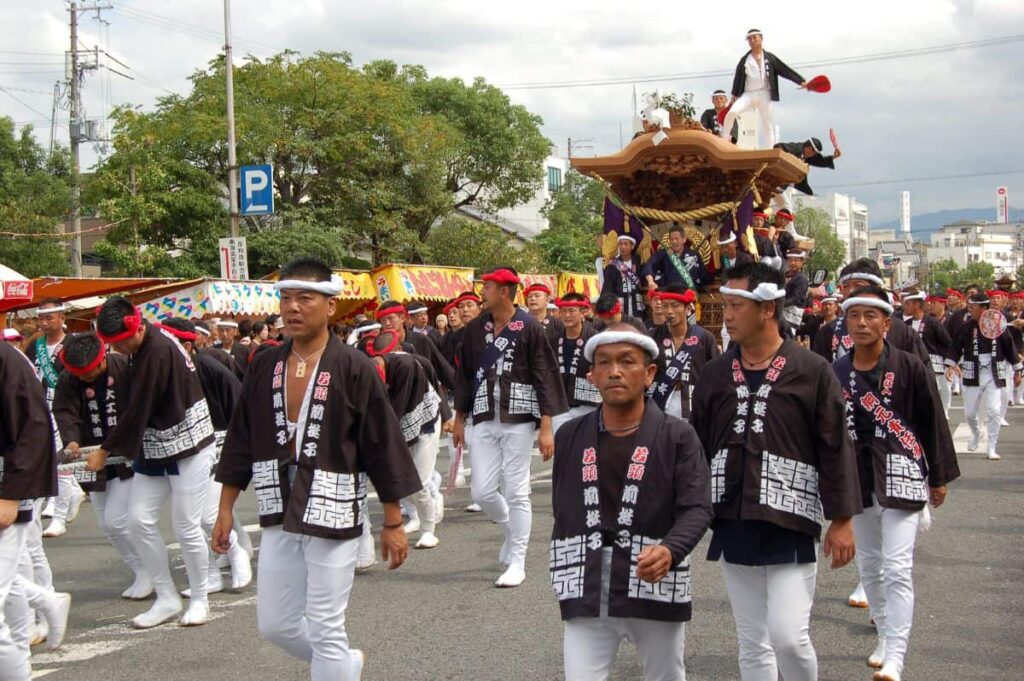
In mid-September this Japanese festivals takes place – the Kishiwada Danjiri festival. This festival in Japan is a highly dangerous time-honored ritual that dates back centuries and is a testament to religious fervor and the power of sake.
Teams from across town relentlessly drag towering wooden temple cars, known as danjiri floats, through the neighborhood. Despite their gargantuan size – some reaching 4+ tons – the danjiri are more like oversized rickshaws than platforms, forcing each team to muster Herculean strength.
As crowds roar in a fervent drunken din, the teams collectively heave and pull the ornately decorated behemoths while frantic crew members scramble to lube and stabilize them from tilting into oblivion. The sight of a glorified oversized temple car the size of a suburban house maneuvering through claustrophobic street corners at full tilt feels like watching Newton’s laws of physics being spit upon. This is a highlight among traditional Japanese festivals.
Here are some key features of this Japan festival:
- Time: Mid-September
- Festival: Kishiwada Danjiri.
- Unique Feature: Teams drag towering wooden temple cars known as danjiri. floats through the neighborhood.
- Challenge: Despite their gargantuan size – some reaching 4+ tons – the danjiri are more like oversized rickshaws than platforms.
- Experience: As crowds roar in a fervent drunken din, the teams collectively heave and pull the ornately decorated behemoths.
- Highlight: Among traditional Japanese festivals.
- Location: Kishiwada City, Osaka Prefecture, Japan.
- Address: 1-10 Miyamotocho, Kishiwada-shi, Osaka-fu, 596-0054.
- Festival Website: You can find more information on the official Kishiwada Danjiri Festival website.
Need a hotel near Osaka Prefecture? check below the availability.
Yuki Matsuri
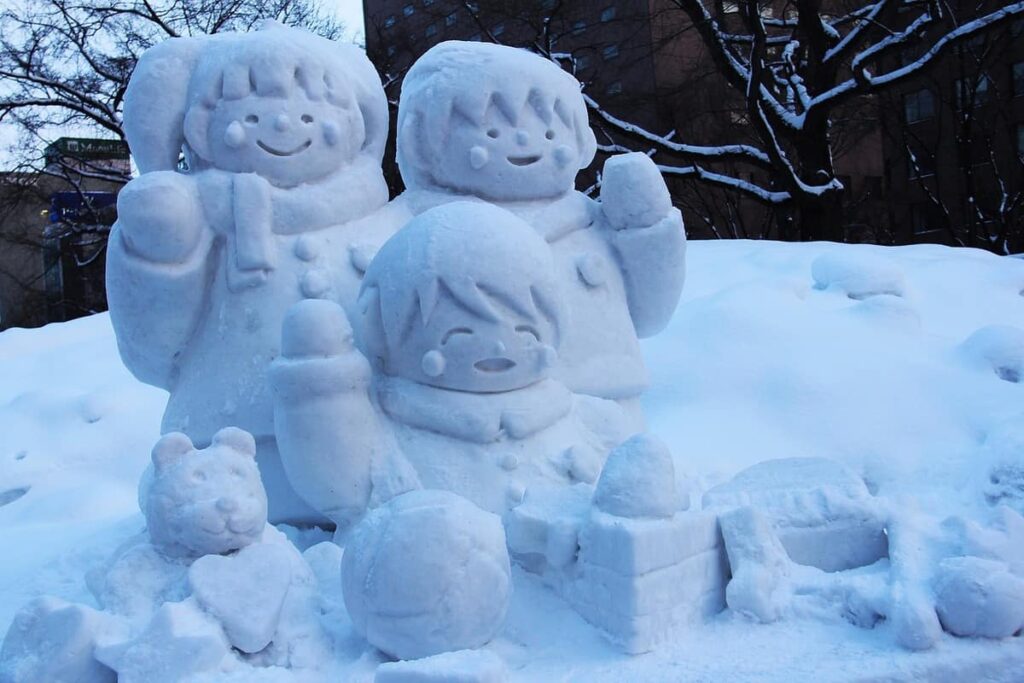
In early February, during the peak of winter, Sapporo hosts its iconic Snow Festivals. This festival in Japan is a paradoxical cultural celebration in harsh polar conditions, where towering ice sculptures line every park and avenue.
While lesser cities contract into weather-induced hibernation when the mercury plummets, the indomitable Sapporo residents treat the endless white drifts like a canvas for monumental expressions of vibrant human spirit. The ice sculpting may draw the crowds, but the real heart and soul of this traditional Japanese festival, Yuki Matsuri, lies in its decadent winter cuisine and fever dream phantasmagoria of exhibits.
Here are some key features of this Japan festival:
- Time: Early February (peak winter)
- Location: Sapporo
- Unique Feature: Towering ice sculptures lining every park and avenue
- Experience: Indomitable Sapporo residents treat the endless white drifts like a canvas for monumental expressions of vibrant human spirit
- Heart and Soul: Decadent winter cuisine and fever dream phantasmagoria of exhibits
- Exhibits: Sprawling around Odori and Susukino parks, featuring blazing fire gardens, delirious DJ dance stages carved into the ice itself, glittering rainbow-hued forest trails, and lifelike Disney character ice sculptures
- Highlight: Among traditional Japanese festivals
Main Venue: Odori Park, located in the center of Sapporo.
- Address: 1-4 Minamiuchi-machi, Tokushima-shi, Tokushima-ken.
- Highlights: Odori Park stretches across approximately 1.5 kilometers and features a fascinating world of snow and ice sculptures.
Additional Venue: Susukino District
- Address: Located in the Sapporo City Centre district of Sapporo.
Need a hotel near Sapporo City? check below the availability.
Additional Posts
- Dive into luxury with our ultimate guide to the best luxury hotels in Osaka.
- Experience the thrill of Japan’s bustling capital with our post on the top 17 experiences in Tokyo.
- Uncover Historic Kyoto Japan’s Hidden Gems: 20 Must-Sees
- Cherry Blossom in Hokkaido: A Dreamy Island Escape
- Effortlessly Getting Around Japan: A Budget-Friendly Guide
